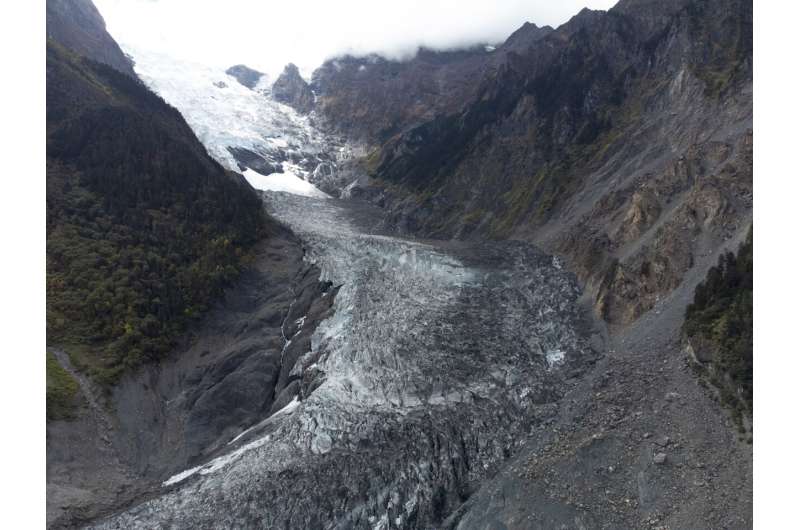Study reveals atmosphere-driven glacier mass loss changes at Urumqi Glacier

Glacier mass balance is one of the most important parameters characterizing glacier changes. However, the scarcity of glacier mass balance and meteorological data in the glacier area limits our understanding of glacier changes in the Tianshan Mountains.
Recently, researchers from the Northwest Institute of Eco-Environment and Resources of the Chinese Academy of Sciences have revealed energy budget and mass balance characteristics for Urumqi Glacier No.1 in the eastern Tianshan Mountains, based on an energy-mass balance model and high-altitude measurements from May to August 2018.
The study was published in Climate Dynamics on Dec. 7.
The researchers found that Urumqi Glacier No.1 experienced a significant mass loss, with an average value of -0.77 m water equivalent (w.e.) from May to August 2018. Besides, radiative fluxes and turbulent fluxes were the main energy components that affect the energy budget on the glacier surface.
The study also indicated that the net shortwave radiation, incoming long-wave radiation and sensible heat flux were the main energy components, and the reflected long-wave radiation, latent heat flux and ground heat flux are the main energy expenditure components. Surface melt (-0.73 m w.e.) and snowfall (0.19 m w.e.) dominated glacier mass balance.
Moreover, the sensitivity results showed that air temperature is the dominant meteorological factor affecting mass loss of Urumqi Glacier No.1.
More information: Hongliang Li et al, Summertime surface mass balance and energy balance of Urumqi Glacier No. 1, Chinese Tien Shan, modeled by linking COSIMA and in-situ measured meteorological records, Climate Dynamics (2022). DOI: 10.1007/s00382-022-06571-z
Journal information: Climate Dynamics
Provided by Chinese Academy of Sciences


















